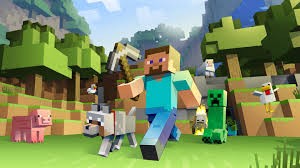 Parents might be happy to know their kids can get a head start in the competitive slipstream of computer programming by doing something they already enjoy — playing video games.
Parents might be happy to know their kids can get a head start in the competitive slipstream of computer programming by doing something they already enjoy — playing video games.
That’s the goal of Server Design 1, a new online course rolled out Tuesday by Youth Digital, a tech education company that teaches kids to code, develop apps, and design 3D modeling. The company’s new program allows kids to create their own worlds, with their own rules, all while playing the popular video game Minecraft with their friends.
“You get to add things that you would never ever, ever, ever be able to do without a programming interface,” said 10-year-old Ronan, an early adopter of the new tech tool who’s become well-versed in developer lingo while not losing that kid’s perspective. “You can create skeletons wearing iron doors. How weird is that?”
The interface he’s talking about is a unique Java server, part of a yearlong subscription (for $250) to curriculum, tools and a hosting service with Youth Digital, where kids custom-code their own Minecraft environments, characters and scenarios.
Minecraft, a “virtual Lego” video game that’s a runaway hit with younger players, is made by Mojang, a Swedish game maker purchased last year by Microsoft for $2.5 billion. The game provides an infinite digital sandbox where kids can dig and build different kinds of 3D blocks. Or, as Ronan explained in a Youth Digital video: “I can turn a blank screen into a virtual playground.”
With the burgeoning programming and development job market, code literacy has become an increasingly popular part of higher education curriculum. Parents, schools and future employers have been pushing to integrate the developer’s languages — JavaScript, HTML, CSS — as early as grade school to give kids a head start. One stumbling block is making the methodical, typing-intensive learning fun for kids.
But Justin Richards, founder and CEO of North Carolina-based Youth Digital, says there’s a natural connection between kids’ penchant for creativity and the complex world of computer programming.
“If you tell 9-year-olds that coding experience will help them get a job in the future, they might not be too interested,” said Richards. “But if you ask them if they want to create a video game, they’ll answer yes every time.”
This isn’t the first time Minecraft has been repurposed for the classroom.
The Australian government funds a competition for school children that challenges participants to design their “perfect national park” using Minecraft as a design medium. And MinecraftEdu, which makes a custom edition of the game specifically for classroom use, offers discount licenses to schools.
But the Server Design 1 program puts the kids, ages 8 to 14, right in the driver seat. “This matches science and storytelling into a singular project,” Richards said. “It’s exploratory and just plain cool to actually get to modify the code and change the game that you love.”
The simple concept behind this and all of Youth Digital’s programs, he said, is to “turn the youngest consumers of technology into its creators.”